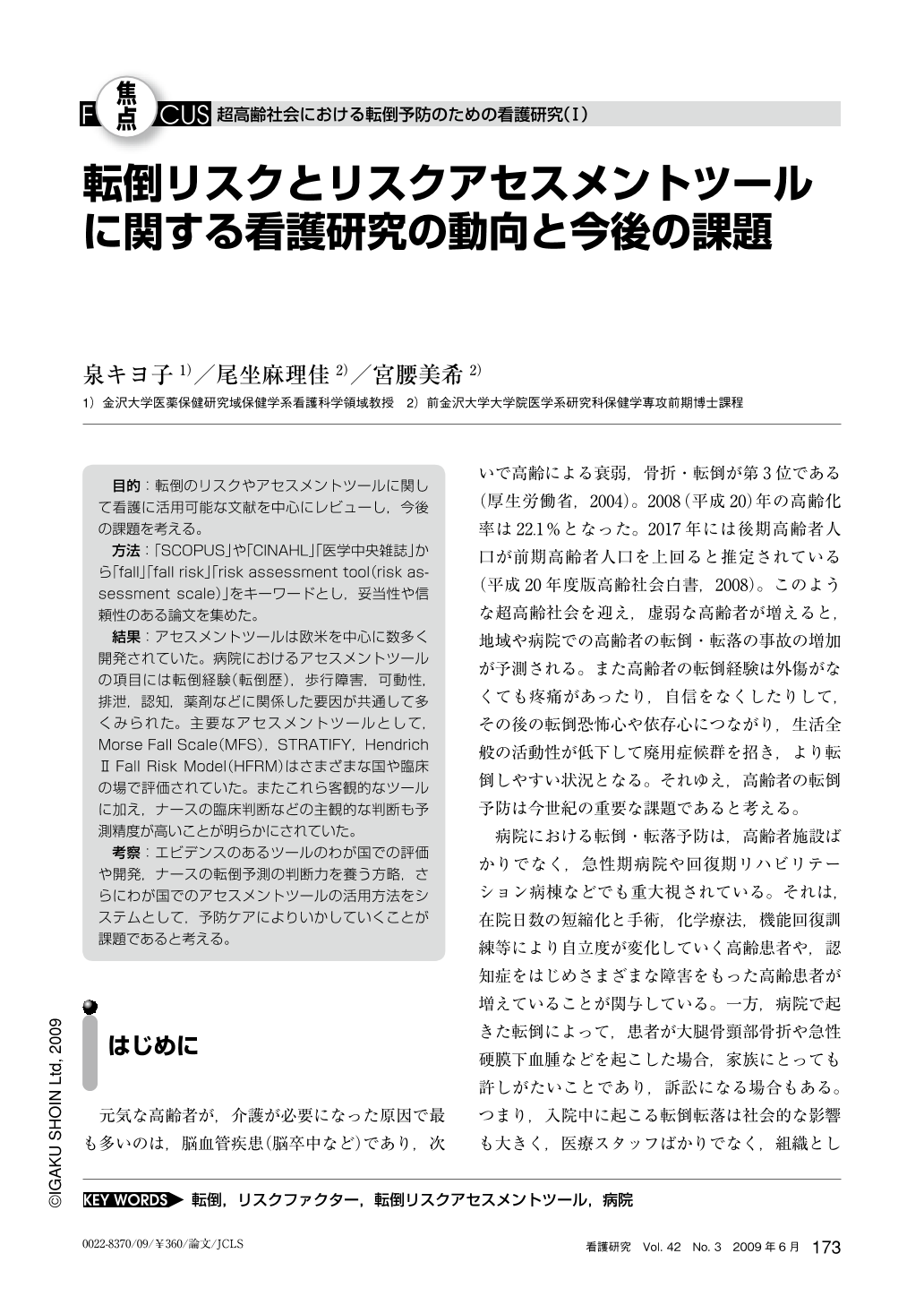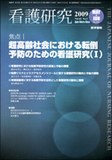Japanese
English
- 有料閲覧
- Abstract 文献概要
- 1ページ目 Look Inside
- 参考文献 Reference
- サイト内被引用 Cited by
目的:転倒のリスクやアセスメントツールに関して看護に活用可能な文献を中心にレビューし,今後の課題を考える。
方法:「SCOPUS」や「CINAHL」「医学中央雑誌」から「fall」「fall risk」「risk assessment tool(risk assessment scale)」をキーワードとし,妥当性や信頼性のある論文を集めた。
結果:アセスメントツールは欧米を中心に数多く開発されていた。病院におけるアセスメントツールの項目には転倒経験(転倒歴),歩行障害,可動性,排泄,認知,薬剤などに関係した要因が共通して多くみられた。主要なアセスメントツールとして,Morse Fall Scale(MFS),STRATIFY,HendrichIIFall Risk Model(HFRM)はさまざまな国や臨床の場で評価されていた。またこれら客観的なツールに加え,ナースの臨床判断などの主観的な判断も予測精度が高いことが明らかにされていた。
考察:エビデンスのあるツールのわが国での評価や開発,ナースの転倒予測の判断力を養う方略,さらにわが国でのアセスメントツールの活用方法をシステムとして,予防ケアによりいかしていくことが課題であると考える。
[Purpose] To review previous practical nursing research regarding the risk factors and assessment tools for falls and to consider further research.
[Method] Research papers were refferenced and reviewed using the key words, “fall”, “fall risk”, and “risk assessment tool (risk assessment scale),” in the SCOPUS, CINAHL, and ICHUSHI databases.
[Results] Many assessment tools have been developed and widely adopted in Western countries. The most common items in the assessment tools used in hospitals were as follows : history of fall, lack of walking, mobility, excretion, recognition, and drug use. The main assessment tools are the Morse Fall Scale (MFS), STRATIFY, and Hendrich II Fall Risk Model (HFRM) used for evaluation in many fields of clinical practice in many countries. In addition to these objective tools, subjective judgment such as clinical judgment by nurses was identified as accurate for predicting future falls.
[Consideration] Development and evaluation of the Japanese-modified evidence-based tools, refinement of strategies to raise the ability of nurses to judge the possibility of future falls, and also fulfillment of the systematic use of assessment tools in Japan are needed for future clinical practice for predictable care for falls.

Copyright © 2009, Igaku-Shoin Ltd. All rights reserved.


